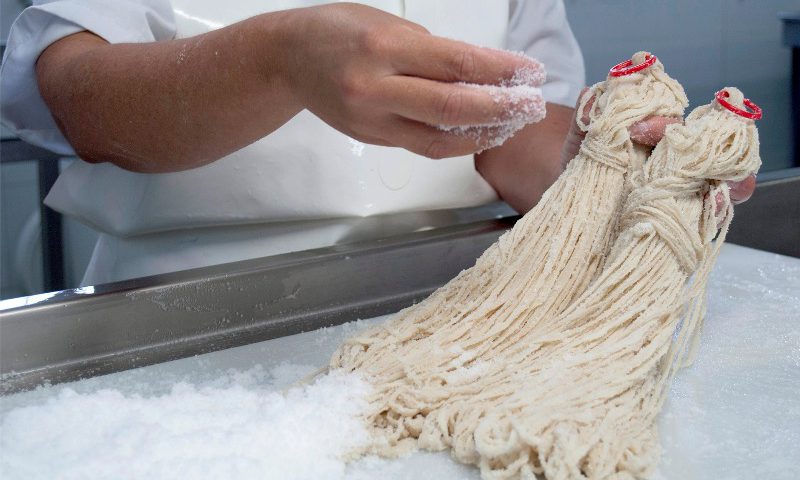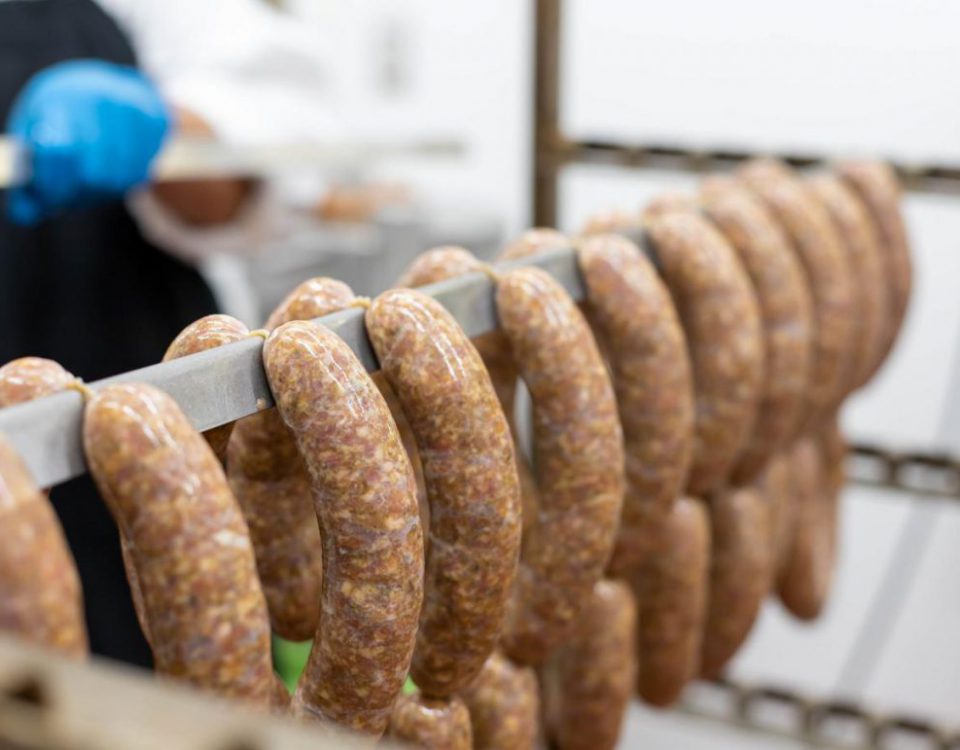
استاندارد های پوشش روده ی طبیعی
July 9, 2021
ایا آلایش دام خوراکی است یا غیر خوراکی؟
July 25, 2021This post is also available in: Persian
It is vital to know how the animals whose organs are being eaten were raised before slaughter.
Aside from the moral implications, organ meats obtained from stressed and mistreated animals can cause all sorts of problems.
For example, fatty deposits can often build up, particularly around the heart and kidneys. Essentially, if the animal has led an unhealthy life, their internal organs will not be healthy either.
It is recommended that organ meats should be sourced from a farm that uses organic practices and puts its animals out for pasture.
“Guts” is an interesting word. Literally, refers to any of the internal organs and entrails of a butchered animal, and provides a great deal of food itself. The word does not refer to a particular list of edible organs, which varies by culture and region, but includes most internal organs excluding muscle and bone. Some cultures shy away from guts as food, while others use it as everyday food or in delicacies.
Some offal dishes are considered a gourmet food in international cuisine. This includes foie gras, pâté, veal tongue and sweetbreads. Other cuts dishes remain part of traditional regional cuisine and maybe consumed especially in connection with occasions such as the Scottish tradition of eating haggis on Robbie Burns Day.
Many people in the world today savour the deliciously prepared parts of the alimentary canal, as many more would never even consider putting “guts” on their dinner plate. It is interesting how many of those who will eat guts often give the meat an innocent-sounding euphemism as if that would distance the food from its anatomical origins.
Just as feet are called “trotter,” the pancreas and thymus glands are called “sweetbreads,” lungs are called “lights,” the spleen is called “melt” and testicles have a variety of more socially acceptable names, the stomach of ruminants, especially from the ox, calf, or sheep, is called “tripe,” as, sometimes, are the intestines, while the intestines of young pigs are called “chitterlings.”
Such foods, along with other internal organs, are called offal, meaning, literally, the “off-fall” or off-cuts from the carcass; many call these “variety meats.”
Eating entrails has a history as long and twisting as the gut itself-proving that no matter what something may have once contained, with the proper preparation, a tasty meal can be made of it. Many European countries are known for their sausages; Germany alone boasts nearly 1,500 varieties. Many sausages could contain offal such as lung, spleen, pancreas, and intestine is used to hold the filling is called “skin.” The intestines themselves also may be minced and added to sausage’s other ingredients. Ox intestines also common ingredients in blood sausage (black pudding), a dish most often associated with the north of England but found in many other European countries as well.
In most parts of the west, notably in the United States and some European countries, these meats are sold to pet food canneries, a waste, because the spleen is a fine sausage ingredient and, along with heart and lungs, may be used in stews; the pancreas and thymus glands from the neck and heart of young animals can be braised, fried, or saluted. In some areas, however, lungs are a major taboo; in the United States, Japan, and several other developed countries, the import of haggis has been banned because sheep’s lungs are an integral ingredient.
Tripe comes from the first and second stomachs of oxen, the former providing “plain” tripe, and the latter looking much like a honeycomb, and regarded as the tastiest. As true for intestines, preparation of tripe is lengthy, requiring ninety minutes of simmering before becoming tender. The good news is that most tripe is sold in stores cleaned and prepared for cooking, so the repeated lengthy washing and soakings are not necessary, although must still be simmered at home.
Tripe is eaten throughout most of Europe. In French, tripes may be cooked with pig’s trotters, goose fat, or white wine, and pig’s caul, the lave-like, fatty membrane around the paunch, is the binding used for “crepinettes”, small forcemeat sausages made from lamb or pork. The French also use it to wrap pate. “Tripes a la mode de Caen”, arguably, the most famous of French tripe dish-cooked with calves’ feet, garlic, thyme, bay leaf, beef fat, cider, and Calvados.
The Spanish garnish tripe with chorizo, chili peppers, garlic, and thin strips of capsicum. In Bulgaria, there is a popular tripe soup. In Arabian countries, it is boiled with cumin, pepper, and the rind of citrus. In Mexico, it is a part of “menudo”. It also may be cut into 2,5 cm and batter-fried or dipped into egg and breaded and fried until crisp, another beer snack.
A popular and considered expensive dish across the country in Vietnam is “Súp cua óc heo,” crab soup with pig brain which is often eaten for breakfast. A cheaper version but very popular is pork organs porridge “cháo long.” Another specialty is “lòng xào nghệ,” stir-fried pork intestine with turmeric of Quảng Ngãi Province in the South Central Coast Region of Vietnam.
Pork or beef intestine such as lungs, kidney, heart and stomach can be braised with five spices such as in “phá lấu long” dish. The tasty innards are chopped up and loaded into baguette sandwiches or sold by the plate as an entrée to accompany rounds of “bia hơi” draught beer or “rượu đế” rice wine.
Perhaps the single most effective way to reduce meat emissions would be to eat less of it, of course, but eat more guts, fewer animals would need to be slaughtered to feed the same number of people. As well as being economical, this attitude demonstrates certain respect for the animal. With concerns about the carbon footprint of much meat, it can also be argued that eating nose-to-tail is a more environmentally friendly approach to rearing animals for meat. Besides cuts meats can be a great addition to your diet. They’re packed with nutrients, such as vitamin B12 and folate, and they’re also an excellent source of iron and protein which is also easy on the wallet.






